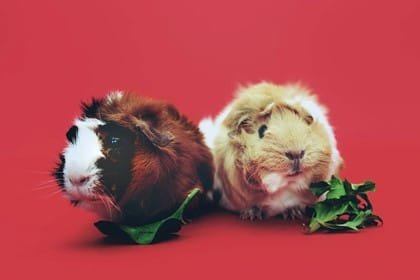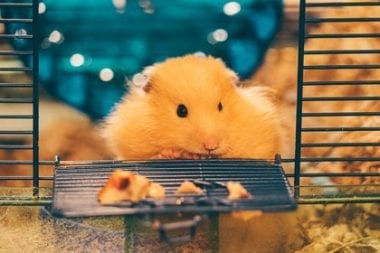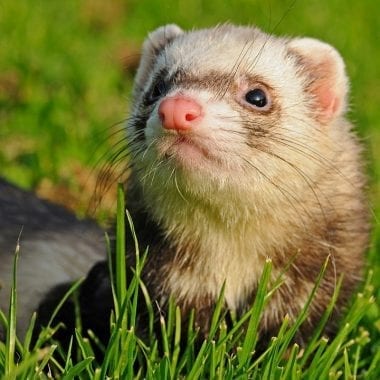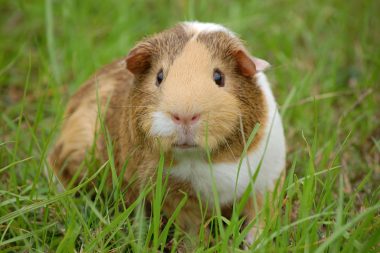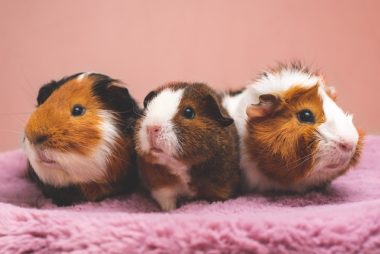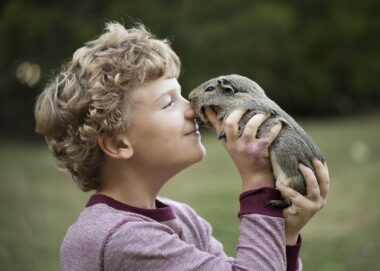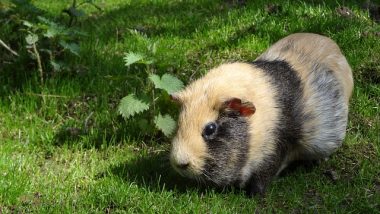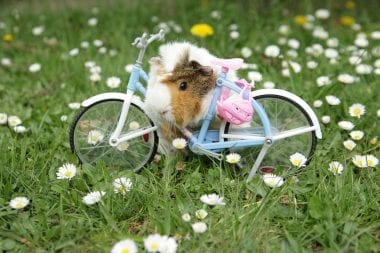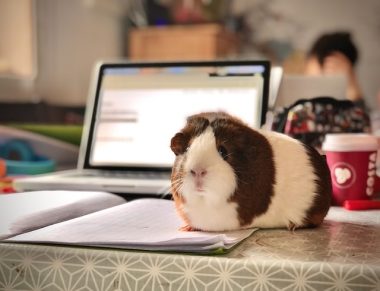Image Source
For a guinea pig to grow happy and healthy, it should be fed a balanced diet. When you have an answer to the one popular question – “what can I feed my guinea pig?” this pet is relatively easy to care for. As long as its nutritional needs are met this pet is not too vulnerable to many diseases. From hay to veggies there are several items you can feed your guinea pig. But there are also some vegetables and fruits that can be toxic to them. It is for this reason that most pet owners have this strong doubt – what can I feed my guinea pig!
Guinea pig’s health problems and dietary requirements
Guinea pigs are herbivores and so their meals would only consist of a plant-based diet. Knowing about the specific nutritional need of any animal makes it easy to narrow down its optimal food choices.
· One of the primary aspects of a guinea pig’s growth you should remember is that their teeth never stop growing. When they grow too long, they would make it difficult for the guinea pig to eat its regular food. This results in a drop in food consumption. Starvation can lead to some serious issues in the guinea pig. It is therefore important to provide items like hay in the guinea pig’s diet. These are particularly to ensure that the growth of the teeth is kept under control.
· For guinea pigs, the one main nutrient that should be part of their diet is Vitamin C. There is no natural formulation of this vitamin happening within the guinea pig’s body. But they need these crucial vitamins to maintain their gum health. Like human beings, guinea pigs also develop scurvy when they have a severe vitamin C deficiency. So, you should try and incorporate vitamin C in the form of supplements or natural food sources.
· Gastrointestinal stasis is one of the common diseases in a guinea pig. It is characterized by severe diarrhea that can be fatal when left untreated. This disease occurs as the guinea pig has a very sensitive digestive system. Therefore it is imperative that you pay attention to the vegetables and fruits you feed your guinea pigs. Even when the portion size of healthy vegetables exceeds the recommended limit, it can lead to diarrhea.
So, what can I feed my guinea pig so that it stays healthy and free from diseases? Hay, pellet food, and vegetables should be combined to form a healthy meal for your pet.
Hay – why is it so important for your guinea pig?
If you are a first-time guinea pig owner or if you have plans to bring one soon, have you noticed how all guinea pig cages are stocked up with hay? It is because this is one of the primary items to add to your guinea pig’s diet. There should always be plenty of hay for these tiny pets to munch on. Hay doesn’t just stop the overgrowth of your guinea pig’s teeth but also helps in improving its digestive health. While hay is important in a cavy’s diet, the type of hay you offer is a lot more important.
Best hay to feed
Timothy hay is one of the most popular choices for guinea pigs. It is easy to come by and very healthy for cavies. The rich fiber content in this hay helps in maintaining healthy digestion in these animals.
You can easily choose sundried hay that is readily available in packs or even in the form of cubes. Cubes are easy to place in the cage. They are nothing but a compressed form of timothy hay. Considering how finely sized and consistent the fibers in the cubes are, these can be wonderful choices for young guinea pigs. Loose hay can be laid down as bedding to let the guinea pig comfortably munch on it all day. Make sure that you choose additive-free and preservative-free hay. Storing them in a dry condition would help in maintaining the texture.
Besides timothy hay, grass hays with wild flowers also make great choices for your guinea pig. Grass from your own meadow carefully sun-dried and preserved in a dry condition can be easily fed to the cavies. One main reason why some cavy owners pick grass hay is that they are soft and easy to munch. Like timothy hay, grass hay can also be used as bedding or placed in piles within the cages. Orchard grass with diverse flavors would also be a big hit with your pet. The other kind that works is oat hay.
Worst hay to feed
Alfalfa hay is the one type of hay you should eliminate from your cavy’s cage as much as you can. With the rich calcium content in it, this hay can be detrimental to your pet’s health. The high-calorie content of this hay also makes it unfit to feed guinea pigs. Too much calcium in the diet would be difficult for these animals to digest. Kidney stones are common issues in guinea pigs that consume alfalfa hay. Some commercially bought hay might be adulterated with yellow straw. This might not meet the guinea pig’s nutritional requirements.
Pellet foods
Pellets are the easiest ways to ensure that your guinea pig gets all its daily nutrients. There are some pellet foods that also come with a good dose of vitamin C. If it doesn’t, you might have to add a vitamin C supplement to the pet’s diet. Make sure that you only choose good quality pellets that are free from artificial additives and synthetic colors.
What can I feed my guinea pig when I choose pellet foods? This is another common question as there are several types of pellet foods and not all of them are healthy. Fiber, vitamin C protein, and fat should be the primary component of the chosen pellet food for guinea pigs.
The dosage of the pellets depends on the brand you choose. On average, most commercial guinea pig pellets might have to be fed at the rate of 30g-50g for each guinea pig on a daily basis. Guinea pigs do not know when to stop and so you should be very careful about the amount of pellet food you place in their cage. Overfeeding easily leads to obesity and a variety of other health conditions. Make sure that you store the pellets in an air-tight container in a dry and dark corner of your house. This would preserve the Vitamin C content in the pellets.
Vegetables
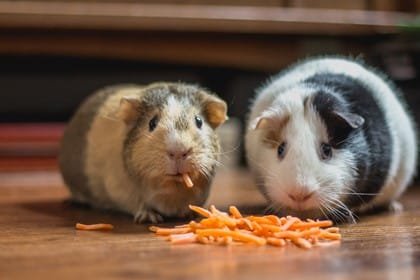
Image Source
Vegetables can be fed once a day and fruits not more than twice a week. A bowl of fresh vegetables would be enough for an adult guinea pig.
· Cucumber
· Romaine lettuce
· Bell peppers
· Carrots
· Corn on the cob with the silk intact
· Apples
· Melon
· Tomatoes
· Strawberries
· Oranges
· Peaches
· Kale
· Broccoli
· Carrot and radish tops
Make sure that you only choose fresh vegetables for your cavy. Wash them thoroughly before placing them in your pet’s food bowl. During the summers do not drain out the water after feeding the vegetables. If there are drops of water still on the veggies, it will help in hydrating your guinea pigs even if they forget to drink enough water. Ensure that the fruits and vegetables you feed your cavy are at room temperature.
Food items that can be toxic to your cavy
Knowing about these is particularly important so that you do not let your pet munch on something to eat only to know later that it had an adverse effect on it.
1. Grapes and raisins
2. Coconut
3. Chives
4. Onion and garlic
5. Avocado
Iceberg lettuce is one vegetable that doesn’t have a serious impact but can lead to mild to severe diarrhea. Besides the recommended pellets, and vegetables, avoid feeding other human food and snacks to your guinea pigs. Salty foods in particular can be bad for your pet.
And finally, some treats
Like all other pets, cavies love treats. But make sure that you do not give too much of them. These are flavored delicacies that are an instant hit with guinea pigs. You can use them when you are trying to tame your guinea pig. Treats can also be used to comfort your guinea pig when it is stressed, like when you are moving it outside its cage for cage cleaning. There are some safe and healthy treats containing natural ingredients. You can also pick small chunks of your cavy’s favorite vegetable as a treat instead.
A final word on guinea pig’s food
So, what can I feed my guinea pig so it grows healthy and happy? A good mix of hay, vegetables, and pellet foods would keep your cavy fit and active. There should also be a bottle of fresh water in the cage throughout the day. Make it a point to empty out the bottles and fill fresh drinking water every morning. These animals have relatively stronger immunity than several other pets. They are therefore easy to care for as long as you continue to give them a wholesome balanced diet.
